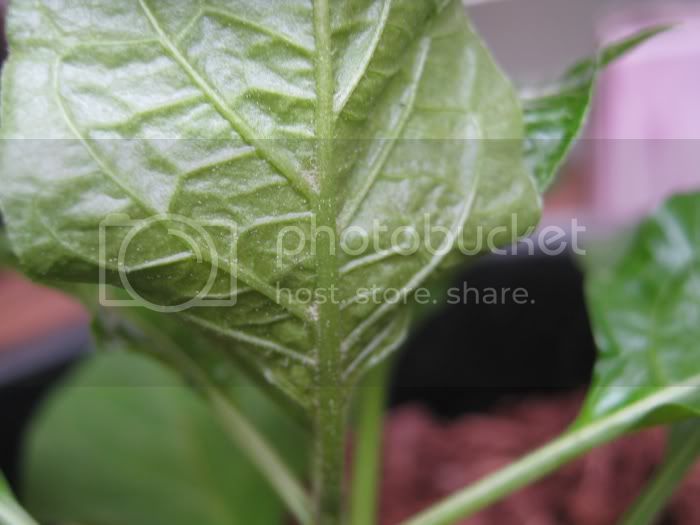They can be a complete disaster and stunt your plants growth for months or even kill them. I pray to God I keep them away from my plants.
Indeed. FTB tells no lie or exaggeration.
Some of my plants that didn't make it last season:
All four got hit early and so severely they eventually died.

Three major factors that make broad mite so hard to deal with:
* Their saliva is highly toxic to plants. This toxin is what causes the damage and causes plants to become stunted (or worse, death). A very small amount of the buggers can still cause great damage. All damaged growth should be removed immediately to help stop the spread of toxin and help reduce the chances of the plant becoming stunted. For the same reason (toxin), even after successful control, damage can still persist for some time. This also makes it extremely difficult to confirm successful control as it can appear that the broad mite is still present.
* Their size, and with that, their ability to hide well. Being all but completely invisible to the naked eye makes it extremely difficult to confirm successful eradication and to spot reinfestation early. By the time you see the damage, it is usually too late and the broad mite have already spread and moved on to other plants/fresh grow tips. When monitoring for broad mite, look not just to already damaged plants but also to the new growth of seemingly unaffected plants in the same vacinity.
I can sometimes *just* make 'em out with the naked eye--but it is likely to be the larval females or eggs I am seeing. Look closely between the veins:
* Their ability to grow resistance to chemicals. No word of a lie, I have seen them become resistant to certain chemicals after just
one application. The systemic chemical Dimethoate (no longer registered for use on food crops, BTW), for example, worked like a charm the first time I used it but appeared to be completely ineffective the second time. This is why chemical rotation is highly suggested--although in such cases as my experience with Dimethoate, I can't see how rotation would do any good at all?
Reportedly, some members here have had great success using Sulfur to control broad mite (me included), but as it too works by poisoning the mite, I am very hesitant to use it frequently. It should also be noted, never use Sulfur and oils together or around the same time as this can cause phytotoxicity to the plant.
Tired of relentlessly spraying soaps and oils, and no longer wanting to use chemicals (especially if they are only going to be rendered ineffective eventually anyway), I will be trying the broad mite predator
Neoseiulus californicus this season. Put my order in and they should be on my doorstep tomorrow. Not sure what to expect but if they prove an effective means of control, you can guarantee I will be shouting it from the rooftops of this place.....

Of course, even if Californicus proves to be effective, I still have the task of dealing with Queensland Fruit Fly later in the season... but that's
another story!

I want a binoculoar microscope or stereoscope, what ever you call them....hmmmm....
Me too! It would certainly soften the blow of having pests (well, a
very tiny bit) if you could get some cool images of 'em......




















